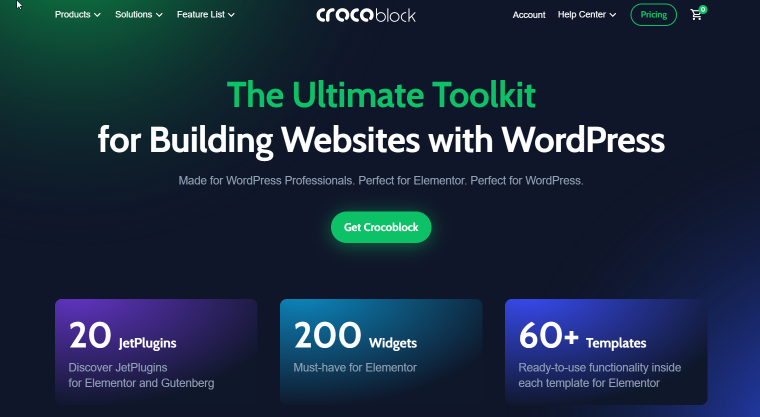The terms “website” and “blog” are often used interchangeably, but there are important differences between the two.
A website is a group of connected web pages containing more information about a business or organization and its offer. Conversely, a blog is where a writer or group of writers share their opinions and perspectives on specific topics.
Often, websites host blogs, but it’s important to note that the two are distinct.
Put simply, all blogs are websites, but not all websites are blogs.
In this article, we’ll cover the following:
- differences between websites and blogs;
- some examples of websites and blogs;
- frequently asked questions about websites and blogs.
Website vs. Blog: Key Differences
Although websites and blogs are similar, here are four differences between them:
Content
A website is static and consists of pages like Home, About Us, and Contact Us that give visitors more information about a business. If the company offers products or services, the website will likely have pages titled Services, Features, and Pricing that break down what they offer and how much customers will have to pay to access the product or hire the company. These pages convince visitors that the business can help them solve their problems.
The information on these pages is not updated often. In fact, the pages may not be updated for years – depending on the growth of the business.
On the other hand, blogs are regularly updated with new content – some as frequently as every day. Each piece of content is known as a blog post and is usually presented in reverse chronological order, meaning that newer blog posts appear first.
Some companies, including eCommerce brands, include blogs on their websites to educate their customers, position themselves as subject matter experts, and keep their audience updated on new developments in the business. In this case, the blog is one part of their whole website.
Writing styles
Since websites aim to explain a company’s origins and offers, the tone of voice used to write the copy/content is formal and professional. This is because they want to be perceived as a severe entity with an experienced team dedicated to helping their customers succeed.
But blogs are generally written by an individual or group of individuals who want to express their thoughts on a particular topic. Thus, the writing style is often informal and conversational – like the writer is talking to a friend. Bloggers often use memes, jokes, and even parodies in their content to make it lighthearted, fun, and easy to read.
NOTE:
Companies that have blogs as part of their websites often hire writers to write informational and thought-leadership content. Since these blog posts represent the business, the writers use a formal and professional tone.
Comments
Since websites are usually static, there’s no field for visitors to leave comments. But on blogs, there’s usually a section at the end where readers can leave comments and feedback for the author.
Software
Both websites and blogs can be built with the same kind of software. The most popular web-building software in the market is WordPress, but others like Wix, Squarespace, and Joomla.
However, many companies prefer to hire web developers and UI/UX designers to code and design their websites from scratch. This is because it gives them more room to create a site that looks exactly as they want it and offers optimal user experience, as opposed to being limited by the WordPress theme’s layout.
On the other hand, bloggers usually don’t have the budget to hire professionals to build their blogs, so they often stick with content management systems (CMS) like WordPress, visually stunning blog themes, and powerful plugins for extra functionality.
NOTE:
There are two versions of WordPress: wordpress.com and wordpress.org. With wordpress.com, you can create a blog for free, and they’ll give you a free domain. But the content you publish on a wordpress.com domain belongs to WordPress, not you.
But if you use wordpress.org, you’ll need to buy your own domain name and pay for web hosting from companies like Bluehost, Siteground, or WPEngine. You may also need to buy a premium WordPress theme, but all your content will belong to you. The latter requires you to spend money, but it’s far better.
Types of Websites (with Examples)
Crocoblock

Crocoblock is a business website that provides information about its portfolio of WordPress-based products – including JetEngine, JetSmartFilters, JetMenu, JetBooking, and more.
On the website, there’s a blog that informs their visitors about product news, WordPress basics, and advanced topics.
HubSpot

HubSpot is a CRM platform that helps companies scale their growth and forge and maintain lasting customer relationships. The website details all the use cases companies can use HubSpot to grow. Depending on their business goals, prospects can use categories (or Hubs) of products – marketing, sales, service, CMS, and operations.
But one of HubSpot’s most effective marketing channels is its blog. With over 5 million monthly readers, HubSpot’s blog is an educational resource designed to teach its readers more about marketing, sales, and customer success, amongst other topics.
Dokan

Dokan is a multivendor marketplace WordPress plugin that enables users to create digital and physical product marketplaces easily. The plugin has 35+ modules and numerous features to manage the complexities of a marketplace. It also integrates with popular payment gateways like PayPal, Stripe, Wirecard, MangoPay, and Razorpay to handle the complex structure of marketplace transactions.
The Dokan plugin provides great resources through its blog and detailed documentation. The blog provides all the how-to’s, marketplace management tips, and promotions. Along with customer success stories, the users will be able to learn the ins and outs of running a successful marketplace.
Types of Blogs (with Examples)
Making Sense of Cents

Making Sense of Cents is a personal finance blog created and run by Michelle Schroeder-Gardner. On the blog, she teaches her readers how to make money online, save money, and become financially free. She also publishes her monthly income reports and has a few courses where she teaches people how to create a blog and make money from affiliate marketing.
We Wore What

In 2010, Danielle Bernstein created a street-style fashion blog called We Wore What, where she documented her style evolution to inspire other people’s outfits and dress senses.
Although Danielle has grown, We Wore What into a global brand with her fashion line, and writers still upload multiple blog posts daily. These blog posts are fun to read and give readers different fashion and beauty ideas to try year-round.
FAQ
Choosing between a blog or website depends mainly on your goal. If you have a service-based business or a brick-and-mortar, you could create a website where you give people information about your business and how they can get in touch with you. But a blog may serve you better if you have a business that requires you to develop relationships with your prospects.
Like Crocoblock and HubSpot, many companies incorporate blogs into their websites. They will be able to educate and update their prospects with the blog and use the blog as a marketing channel for the business through SEO and content marketing.
Yes, you can. You can code your own site or blog from scratch if you know HTML, CSS, and programming languages like JavaScript and PHP. If you’re using a popular CMS like WordPress or Wix to build your website or blog, you can use a template to set it up. Many WordPress hosting companies offer pre-made themes you can easily install to get up and running quickly.
Both blogs and websites can help you make money online. The difference is in how they do it. With websites, the content on your integral pages convinces people to work with you or buy your product. You can even receive orders and payments on your website, even though you don’t have a blog.
But with blogs, you can make money from your blog posts themselves or use the blog to promote your product or service.
There are three significant ways that bloggers make money from their blogs:
Display ads: Bloggers place ads from companies like Google Adsense, Ezoic, and Mediavine on their websites. When people click on the ads, these companies pay the blog owner.
Affiliate marketing: Some bloggers want to sell things on their websites but may not have their products yet. So they can apply to be affiliates for a specific product and sell it on their website. When their visitors purchase the product(s) through the blogger’s affiliate link, the blogger will get a cut of the money.
Sell their own products: Some bloggers develop and sell their products on their websites. This could be physical products like clothing items or digital products like online courses and templates.
Make the Right Choice
Websites and blogs might be similar, but they’re not the same. Both blogs and websites can help you make an income, but you’ll have to choose the suitable model for your business to avoid wasting time and resources.
There are many things to consider while making your choice, but the first thing you should think about is your purpose for setting up a website or blog in the first place.
- Create a blog if you want to share your thoughts on a topic conversationally.
- If you have a business you want to get customers for, a website’s the way to go.
But if you have a product and you want to create a brand for yourself, go for both. The best way to do this is to create a blog inside your website.


I learned a lot between website and blog. Thanks it’s very informative and i wish you make web design blog on how to improve the site structure with web design.
This blog is like a virtual mentor, guiding me towards personal and professional growth Thank you for being a source of inspiration
I like your blog and also how you explain all this. Hope to get some more information from you on any other topic in future.